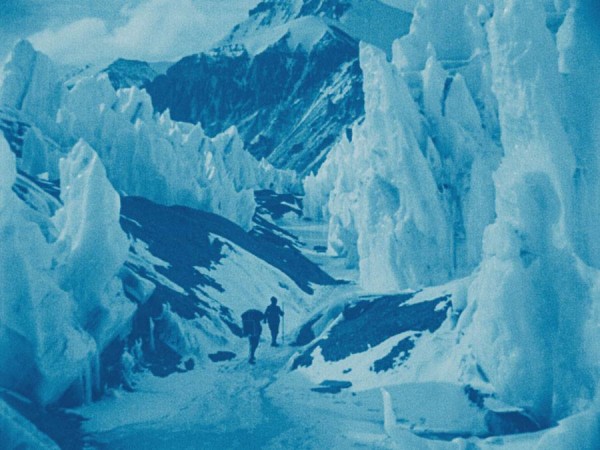
By 1924 both the North and South Poles had been reached with expeditions that dared to wager the ambitions of man against the elements. Everest was considered the ‘third Pole’ and former army officer and cinematographer-director, Captain John Noel, suggested that the highest point on Earth should be conquered.
The Epic of Everest is the official record of a 1924 expedition which is now legendary because climbers, George Mallory and Andrew Irvine, died either on their final ascent or descent of the mountain. To celebrate the 60th anniversary of Edmund Hillary and Tenzing Norgay’s conquest of Everest in 1953, the BFI has restored Noel’s film which includes the original coloured tints and title cards. Simon Fisher Turner was commissioned to write a new score.
The film strives to communicate to the audience the vast expanses of the Himalayas and why Everest would prove such a siren’s call for men pushing themselves to exceed the known limits of human capabilities. The restored title cards read almost like sweeping Romantic questions regarding a quest to meet a mysterious great love. The romanticised Other of the film is Chomolungma, the Tibetan name for Everest, meaning ‘Goddess Mother of the World.’ Using cutting edge technology and cameras of the time, Noel captures the magnitude of the mountains along with intimate footage of Tibetan people going about their lives on the ‘roof of the world.’
The Edwardian bravado of young men in tweed jackets, some even wearing ties, is shown in contrast to the underappreciated spiritual tradition and honed survival skills of Tibet. The film unwittingly exposes a blatant sense of cultural superiority by the British adventurers reminding us of the historical context. As the supports gradually fall away from the men when climbing ever higher towards the summit, Noel’s camera, now filming the climbers from distances of up to two miles away, begins to take on an arguably more spiritualised perspective of these ‘supermen’. Noel filmed Mallory and Irvine as they disappeared up Everest and includes the team’s rescue attempt. The poignancy of the rescue effort creates an increased respect for the capacity both of human beings and of nature itself.
Mairéad has awarded The Epic of Everest five Torches of Truth


















